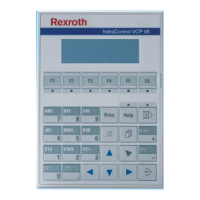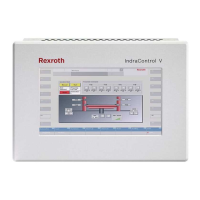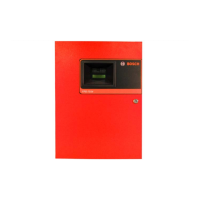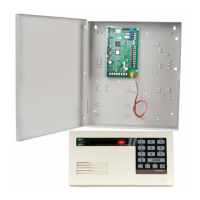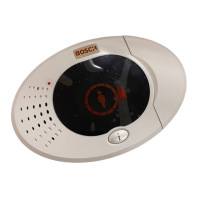
Do you have a question about the Bosch rexroth CP1 and is the answer not in the manual?
| Product type | Control Panel |
|---|---|
| Manufacturer | Bosch Rexroth |
| Series | CP1 |
| Operating Voltage | 24 VDC |
| Operating Temperature | 0°C to +50°C |
| Storage Temperature | -20°C to +70°C |
| Protection Class | IP65 |
Defines the scope of this documentation, specifying its applicability to Control panel CP1 and CP2.
Outlines the essential and supplementary documents required for product commissioning and safe operation.
Explains how information, including safety instructions, symbols, and abbreviations, is presented for clarity.
Introduces the safety chapter, emphasizing the risks of personal injury or property damage if instructions are not followed.
Specifies that control panels CP1 and CP2 are designed for hitch control with Rexroth control units and EHC software.
Defines improper usage, disclaims liability for resulting damage, and lists common faulty applications.
Details the necessary mechanical, electrical, hydraulic knowledge and expertise for safe handling and operation.
Covers essential safety practices including regulations, product use, accessories, ESD, modifications, and machine safety.
Provides critical safety guidance for working on systems under pressure and for proper cable and line routing.
Assigns responsibility for personal protective equipment to the user and stresses adherence to country safety regulations.
Defines customer responsibility for risk analysis and system suitability evaluation for tractor safety functions.
Addresses hazards from careless product disposal leading to pollution and electrical voltage risks during installation.
Outlines conditions under which the product warranty will be voided, including improper handling or modifications.
Details the specific items included in the delivery package for Control panel CP1.
Details the specific items included in the delivery package for Control panel CP2.
Describes the CP1 control panel's intended applications, versions, and identifies its operating elements and their functions.
Describes the CP2 control panel's intended applications, version, and identifies its operating elements and their functions.
Explains how to identify products CP1 and CP2 using material numbers found on packaging and the control panel unit.
Specifies the requirements for storing control panels, including duration, humidity, and temperature limits.
Provides essential instructions for unpacking the control panel, including ESD precautions and damage inspection.
Details the necessary conditions and considerations for optimal installation location and line routing.
Covers preparation steps for assembling control panels, focusing on material number verification and order confirmation.
Emphasizes observing safety instructions and ensuring system safety prior to the control panel's commissioning.
States that the product requires no operational settings and must be used within its specified performance range.
Provides guidelines for cleaning and caring for the control panel, stressing proper methods and materials.
Notes that no special activities are required for inspection and maintenance of the control panel.
Specifies that repairs must be performed by authorized personnel using original spare parts to maintain warranty.
Instructs users to disconnect the power supply before proceeding with the removal or replacement of the control panel.
Advises on the proper disposal of the control panel and packaging to prevent environmental pollution, following national regulations.
Prohibits conversion or modification of the control panel, as such actions will void the product warranty.
Indicates that detailed permissible technical data is available via online product catalogs and specific data sheets.

